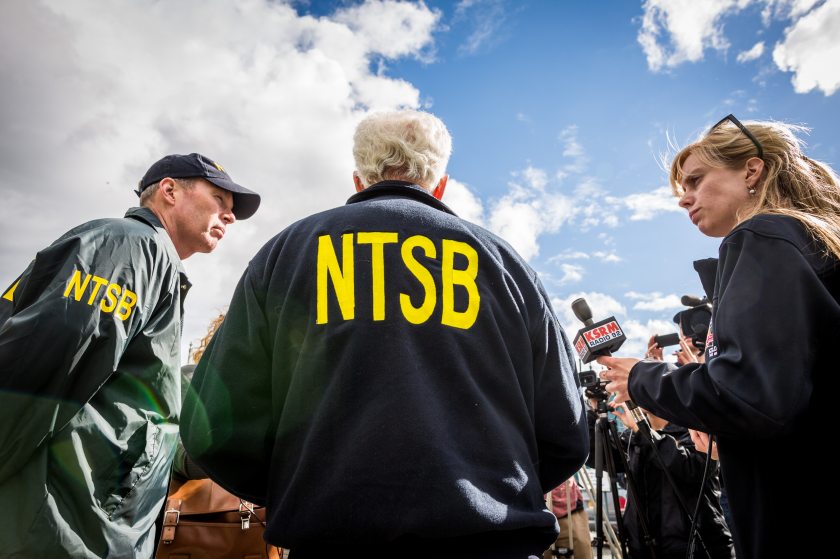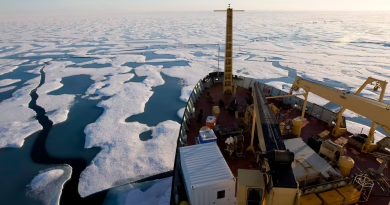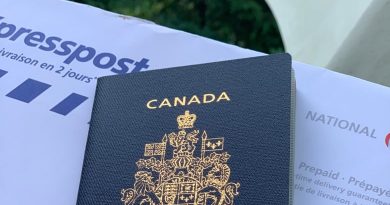Phones, GPS may hold clues to Alaska plane crash

SOLDOTNA — A major accident “go team” of National Transportation Safety Board (NTSB) officials from Washington D.C. arrived here shortly after 5 p.m., Monday, to kick off an extensive federal investigation into a plane crash over the Fourth of July holiday weekend that left 10 people dead.
Officials said Monday that the aircraft, a turbine de Havilland DHC3 Otter, appeared to have crashed on takeoff, yet verifying even that has proven difficult because there were no eyewitnesses to the crash. NTSB on-scene board member Earl Weener said that and other aspects of the deadly crash would be determined during the coming five to eight days he expected the team to be in Alaska.
The identity of the pilot in the crash, Walter “Willy” Rediske of Nikiski, was revealed Sunday. On Monday, The State newspaper based in Columbia, S.C., reported that Rediske’s passengers included two families from Greenville, S.C. Milton Antonakos died in the crash along with his wife Kimberly and their three children, Olivia, Anna and Mills, The State reported. Also reportedly aboard the aircraft were husband and wife Chris and Stacey McManus, along with their two children Connor and Meghan.
Emergency responders in Soldotna said that only nine minutes lapsed between the time crews were dispatched and the time the fire at the wreckage was under control. But it was already too late. All 10 souls aboard had perished.
Major accident investigation
It is a high death toll, the highest in years in an Alaska airplane crash and five times as many dead as resulted from the Asiana Airlines Boeing 777 crash at San Francisco International Airport on Saturday, which has dominated the news ever since. At a media briefing Monday evening, Weener said that though a cause of the crash was far from determined, one likely possibility is a “loss of control,” whether through mechanical or pilot error, or even a weather aberration.
“At the moment, I think that’s where I would start,” Weener said, adding that there was a degree of familiarity for many crashes that the NTSB investigates, given the organization looks at about 1,500 accidents each year. “You see the same thing repeating itself often.”
When it impacted the ground, the plane reportedly erupted in a fireball visible above the tall trees that sit on the airport’s periphery, before rapidly burning into a mostly unrecognizable tangle of charred metal. Mark Swensen, who works with Missionary Aviation Repair Center at the airport, said he was the first person on scene, no more than two minutes after first seeing the explosion, but the plane — and its occupants — were clearly already lost.
Despite the apparent lack of direct eyewitnesses, the likeliest scenario that has emerged — and was corroborated by NTSB Alaska officials earlier Monday — is that the plane went down on takeoff. The crash triggered an explosion that rapidly burned the wreckage, suggesting that the aircraft was loaded with fuel. The area around the crash site was described as relatively intact, which could mean the plane didn’t drag along the ground, as it might in a failed landing.
“Obviously, it got airborne, because of the way the airplane is situated,” Weener said.
Though much of the wreckage had been “extensively damaged” by the post-crash fire, there were a few promising clues, including two recovered cellphones. Whether anything useful will be found on them remains to be seen. There was no “black box” or other recording device aboard the de Havilland, Weener said. Any GPS or positioning devices aboard the aircraft would be analyzed in the investigation.
No witnesses to the crash have been identified, and Weener said he hoped that anyone who had not yet come forward would do so, particularly with photographs or video taken of the crash. It’s possible there may be surveillance video from the airport.
“There’s some indication there might be some, but we have yet to see it,” Weener said.
Both wings of the Otter were broken off though the engine was intact, its propeller bent.
A preliminary report on the accident was expected within a month, but the final, official findings of the agency’s investigation could take up to a year.
Back to normal, never the same
By Monday evening operations at the municipal airport serving this community of 4,200 had mostly returned to normal, although flights taking off or landing required approval from investigators sweeping the runways for obstacles. Kyle Kornelis, the airport manager, said a gravel strip remained closed and was being used by investigators to access the plane wreckage. That could change fairly soon, though.
“Most likely, we’ll move the wreckage to a hangar sometime in the near future,” he said.
Meanwhile, friends and family of the pilot, Willy Rediske, were mostly mum. Gray skies matched the mood at Rediske Air headquarters in Nikiski, about 25 miles up the Sterling Highway. Flags flew at half-staff in honor of the death of the company’s pilot-owner. Andrew Harcombe offered brief answers on behalf of the Rediske family, which formed the airplane charter business in 1991 according to Alaska state records. Rediske Air has six planes, including the de Havilland that crashed Sunday, with offices at the airports in Anchorage and Soldotna.
It’s been a tragic few weeks for Alaska aviators, and for South Carolina residents visiting the 49th state, 11 of whom have died. On June 28, a B-55 Beech Baron crashed near Cantwell, Alaska, a small community along the Parks Highway leading toward Denali National Park and Preserve. Washington state pilot Dale Hemman, 61, was leading a large airplane tour group from Fairbanks to Homer when the plane crashed and caught fire near the highway. Hemman and his passengers, 52-year-old Laurie Buckner of Simpsonville, S.C., and 74-year-old John Ellenberg of Greenville, S.C., all died.
Despite the recent string of tragedies, airplane crashes with such high fatality counts as the Soldotna accident are rare in Alaska. In September of 1995, an Air Force aircraft crashed at Elmendorf Air Force Base outside Anchorage, killing 24. In 1987, a Ryan Air Beech 1900 crashed in Homer, killing 18 people. In 1985, two planes spotting sheep collided near Knik Glacier, killing 12.
Suzanna Caldwell contributed reporting from Anchorage. Contact Ben Anderson at ben(at)alaskadispatch.com



